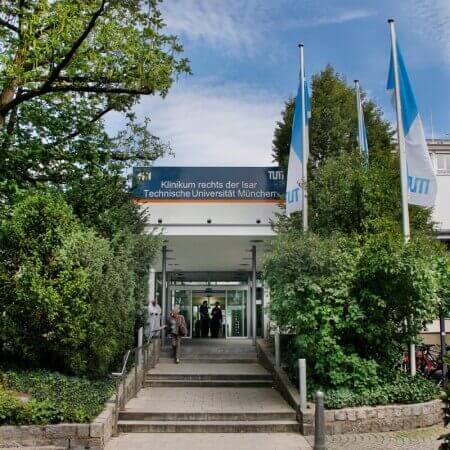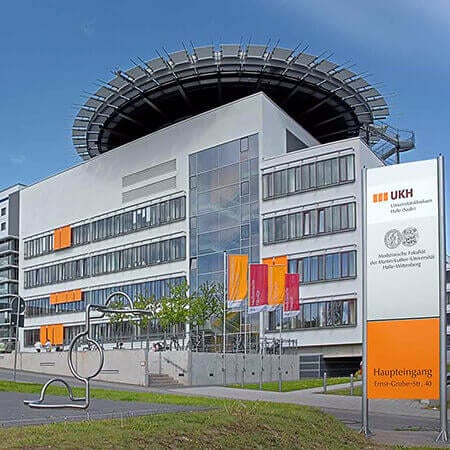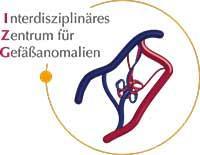Cholangiocarcinoma (Klatskin Tumor) — Embolization or Chemoembolization: treatment in the Best Hospitals of Germany
Treatment prices are regulated by national law of the corresponding countries, but can also include additional hospital coefficients. In order to receive the individual cost calculation, please send us the request and medical records.

Department of Interventional Radiology
The Department of Interventional Radiology offers the full range of imaging examinations, as well as innovative image-guided minimally invasive techniques for the treatment of tumors, vascular diseases and internal pathologies (for example, CT, MRI, PET-CT, SPECT). The department's doctors have deep knowledge and colossal experience in the field of interventional radiological methods of treatment, which represent an excellent alternative to open surgical interventions. Despite the high level of technical equipment and the presence of advanced computerized systems, the focus is always on the person with his individual needs. Compliance with current clinical protocols and high professionalism of the department's specialists contribute to the successful clinical practice, as well as the reputability of the department among the best medical facilities of this kind in Germany.




Department of Interventional Radiology and Neuroradiology
The Department of Interventional Radiology and Neuroradiology offers a full range of advanced imaging diagnostics and minimally invasive treatments on both an inpatient and outpatient basis. The department has state-of-the-art medical equipment for imaging tests such as X-ray, computed tomography, magnetic resonance imaging, digital subtraction angiography, and mammography. The medical facility also performs many highly effective interventional therapeutic procedures under image guidance, which in many cases allow patients to avoid traumatic open surgery. For example, the department successfully performs local fibrinolysis, thrombectomy, percutaneous transluminal angioplasty, hemostasis, transarterial chemoembolization, uterine artery embolization, and other procedures. The department's neuroradiologists specialize in brain and spinal cord imaging and the treatment of central nervous system disorders. Interventional neuroradiology focuses on the treatment of carotid artery stenosis, brain aneurysms, arteriovenous malformations, dural fistulas, subdural hematomas, brain tumors, skull base and spinal tumors, and chronic back pain. The department's medical team has extensive clinical experience in their areas of expertise. The specialists are guided by the recommendations of the German Society for Interventional Radiology and Minimally Invasive Therapy (DeGIR) and the German Society for Neuroradiology (DGNR), which helps to achieve the best results.






Department of Adult and Pediatric Diagnostic, Interventional Radiology, Neuroradiology
The Department of Adult and Pediatric Diagnostic, Interventional Radiology, Neuroradiology is one of the best institutions of its kind in Germany and offers patients the full range of radiological studies and imaging-guided minimally invasive therapy. The department’s scope of tasks also includes imaging diagnostics in children of all age groups, detection and invasive treatment of cerebral vascular pathology (neuroradiology). Patient care is provided both on an inpatient and outpatient basis.






Klatskin tumors are aggressive malignancies that develop in the liver hilum. Portal vein embolization and hepatic artery chemoembolization are used to treat it. If you need endovascular treatment for your disease, you can go to Germany. You are welcome to use the Booking Health service to find out prices and select the most suitable hospital and medical care program for your preferred dates.
Content
- Klatskin tumor treatment principles
- Why is portal vein embolization performed?
- Why is hepatic artery chemoembolization performed?
Klatskin tumor treatment principles
The best treatment method for this disease is considered to be surgery, which provides a five-year survival rate of more than 50% in the absence of cancer cells at the margin of the removed tissue. However, in two out of three cases, the tumor is diagnosed too late, and such patients are considered inoperable. In addition to the advanced stage, another reason for refusal of surgery may be low liver functional reserve, when the risk of liver failure after total tumor removal is assessed as unacceptably high.
The implementation of radiosurgery procedures significantly improved the outcomes of Klatskin tumor treatment. Doctors can use a vascular approach to enter veins or arteries in the liver and then occlude these blood vessels with emboli. Lipiodol oil solution, fibrin glue, microspheres, or other materials can be used as emboli. Some emboli contain chemotherapeutic agents or radioactive substances.
Chemoembolization can be used both before radical tumor removal surgery and instead of surgery if the intervention is not possible. However, these are different procedures involving the closure of the lumen of different blood vessels. Prior to surgery, doctors perform portal vein embolization, and hepatic artery chemoembolization is used for palliative treatment of unresectable Klatskin tumors. Both procedures are successfully used at German Cancer Centers.
Why is portal vein embolization performed?
Radical tumor removal is the only treatment of bile duct tumors that ensures long-term patient survival rates. However, surgery for cholangiocarcinoma involves extensive liver resection, which increases the risk of organ failure. Doctors therefore perform portal vein embolization as part of preoperative preparation to avoid it.
This is a safe procedure, and patients tolerate it well. It is carried out before a partial hepatectomy. Embolization allows doctors to preserve more liver tissue during bile duct cancer surgery, which is particularly important for patients with reduced liver function.
The procedure is recommended by most reputable medical organizations, including European and American societies. Its effectiveness has been proven. In patients with low liver functional reserve, the risk of liver failure within 3 months after surgery is reduced 5 times, from 20% to 4%, and the risk of death from liver failure is reduced 8 times, from 16% to 2%.
Why is hepatic artery chemoembolization performed?
Chemoembolization differs from embolization in that it includes chemotherapeutic agents in the composition of emboli used to block blood vessels. Thus, the method works not only by reducing the blood flow but also through regional chemotherapy because the tumor gets a large amount of cytostatics, which destroy it and inhibit its further growth.
Chemoembolization is a minimally invasive endovascular procedure that is performed through a small incision in the groin under X-ray guidance.
Unlike portal vein embolization, chemoembolization is not a standard procedure for Klatskin tumors. However, it is performed at some clinics because chemoembolization shows good results in trials.
This procedure is not used to cure cancer. The treatment method is considered palliative, and it is used to slow down the progression of the disease. Some patients may, however, achieve a complete response, which means that the tumor completely disappears and is no longer detected by X-ray diagnostic methods.
Standard palliative treatments for Klatskin tumors include systemic chemotherapy, radiation therapy, and procedures to normalize bile drainage, such as endoscopic bougienage of bile ducts and stent implantation. As studies show, chemoembolization is a good additional method to inhibit tumor growth. Research by Wen-Heng Zheng et al. in 2019 showed a twofold increase in median patient survival rates compared to those who received standard therapy.
You are welcome to visit the Booking Health website to undergo diagnostics and treatment for Klatskin tumors in Germany. On our website, you can choose a medical care program at a favorable cost for your preferred dates. The Booking Health specialists will assist you in selecting a hospital and arranging your trip.
Authors:
The article was edited by medical experts, board-certified doctors Dr. Nadezhda Ivanisova and Dr. Vadim Zhiliuk. For the treatment of the conditions referred to in the article, you must consult a doctor; the information in the article is not intended for self-medication!
Sources:

